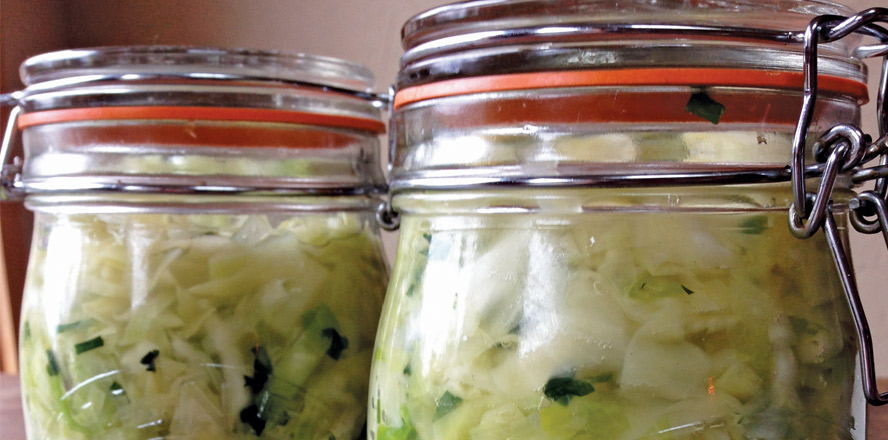by Solara Goldwynn, Hatchet & Seed –
If you’re interested in the local food scene around Victoria, you will have noticed the growing trend in fermented foods.
Some new restaurants in town have dedicated fermentation rooms or ferment specialists on staff. With so many health benefits to go along with a wide range of culinary experiences, fermented foods go beyond a passing fad and move towards a staple food, as they are in many cultures around the world.
So what is a fermented food? Sandor Katz, in his book The Art of Fermentation, defines the process as “the transformation of food by various bacteria, fungi, and the enzymes they produce.” Kombucha, sourdough breads, charcuterie, sauerkraut and kimchi (all fermented) are now part of many menus.
My own experience with and love of ferments came out of necessity. In my mid-20s I spent seven months travelling in India and Nepal. While abroad I suffered from several water-borne illnesses and returned home with a damaged digestive system. I craved sauerkraut. Not the grey-looking stuff in a can, but the non-pasteurized, pro-biotic-rich, crunchy kind. I could eat a whole jar in one sitting. As this was not the most economical way to consume sauerkraut, I began to make my own. It is incredibly easy to make, and when you dive into the world of ferments you realize that many vegetables can be turned into delicious kraut. Here’s my latest batch:
Chive, Nettle, Leek & Cabbage Kraut
Locally-grown cabbage is easy to find! For this batch of kraut I bought the cabbage and leeks at a farm stand in North Saanich and the chives and nettles are from my garden.
2 cabbages
2 large leeks
½ cup chives
1 cup nettles*
3 tbsp salt**
2 airlock jars with clamp lids such as Fido
Chop cabbage, leeks, chives and nettles (wear gloves for the nettles!)
Put ¼ of the chopped vegetables into a bowl and add ¼ of salt; mix. Repeat this three more times, so that all the chopped vegetables are coated in salt. Let this mixture sit for 30 minutes.
Massage the mix, allowing for the brine to emerge.
Pack tightly into jars, allowing the brine to cover the vegetables.
Keep jars in a dark cupboard for at least seven days. Taste your kraut at this point; it should be sour and crunchy. The flavours will develop the longer you leave it. Once it’s to your liking, you can keep the jars in the fridge to slow the fermentation process down.
*Nettles will sting you, so please use caution when picking them and chopping them. Use gloves!
**Recommended ratio for salt is 5 pounds/2 kilograms cabbage to 3 tablespoons/45 grams of salt.




